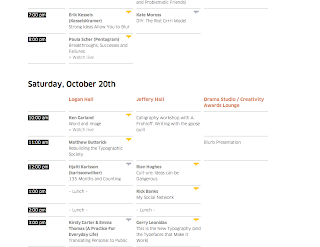Two aspects of Circus entertainment throughout the ages is movement and colour, whetehr it is clowns, animals or acrobats.
In an attempt to create 'movement' and also layering I experimented with he overprint attribute on Indesign
Another aspect of Circus life is diversity ( or oddity/freak shows if you go back to Victorians times). I thought different typefaces from different eras may communicates this.
Bodoni, Bell Gothic and Courier
The dot above the 'i' gave me the idea of maybe subtly conveying the diamond pattern
I think the the typeface Clarendon is a good reference back to the 19th and 20th century.
Clarendon is an English slab-serif typeface that was created in England by Robert Besley for Thorowgood and Co. (or Thorowgood and Besley.), a type company formerly known as the Fann Street Foundry until approximately 1838. The typeface was published in 1845 after Besley, an employee of the foundry since 1826, was made a partner in the firm.[1] Due to its popularity, Besley registered the typeface under Britain's Ornamental Designs Act of 1842. The patent expired three years later, and other foundries were quick to copy it.[2] Clarendon is considered the first registered typeface, with the original matrices and punches remaining at Stephenson Blake and later residing at the Type Museum, London. They were marketed by Stephenson Blake as Consort, though some additional weights (a bold and italics) were cut in the 1950s.
It was named after the Clarendon Press in Oxford. Designs for wood type were made from the mid 1840s on. The typeface was reworked by the Monotype foundry in 1935. It was also revised by Hermann Eidenbenz and Edouard Hoffmann in 1953, Freeman Craw as Craw Clarendon, an American version released by American Type Founders, in 1955,[3] and by Aldo Novarese as Egizio, complete with italics, in 1958, among others.

I tried adding a layer of ITC Franklin Gothic so the colours did not make too much black when layered.



















































